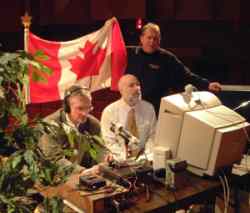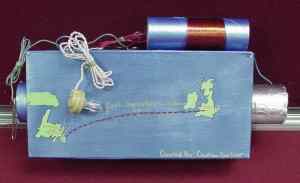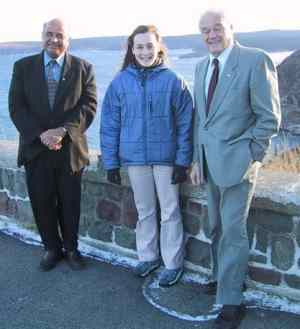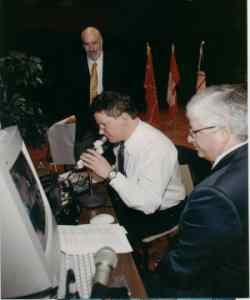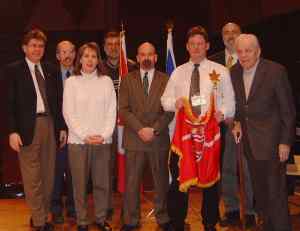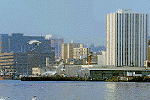
|
|
IEEE Canada |
| - home page |
| - about |
| - history |

| ||||||||||||||||||||||
 | ||||||||||||||||||||||
|
IEEE, ITRE, Memorial University and Amateur Radio Groups
Commemorate the Centenary of Marconi's First Transatlantic Wireless
Experiment
by Joe Craig, Siu O'Young and Len Zedel, Memorial University, St. John’s, Newfoundland
1.0 Introduction On the morning of the centenary day, on the campus of Memorial University just a few kilometres from where the building once was where Marconi made history a century earlier, weak but readable signals in Morse Code were heard on a radio operated by members of the Marconi Radio Club of Newfoundland. The signal was greetings from His Excellency Sir Guy Green, Governor of Tasmania on the opposite side of the world, to His Honour Dr. Maxwell House, Lt. Governor of Newfoundland, commemorating the historic day.
Later, following a ceremony at which the young winners of the Marconi Crystal Radio Contest were announced, a radio message from Poldhu England relayed greetings to all participants including many dignitaries and event organisers. Just after 12:30 local time, a succession of S's transmitted from Poldhu by Carolyn Rule were heard as clicks on a receiver manufactured by the company Marconi started himself. This event marked the centenary with the most authentic re-enactment of Marconi's experiment yet achieved. Wednesday 12 December 2001, the centenary of Marconi's first transatlantic wireless experiment, was marked by a joint effort by the Institute of Electronics and Electrical Engineers (Newfoundland and Labrador Section) the ITRE in Tasmania, Memorial University of Newfoundland and the Poldhu Amateur Radio Club (PARC) and Marconi Radio Club of Newfoundland (MRCN). 2.0 An early start Collaboration between these groups when the author, while in conversation with Mr. Frank Davis, P. Eng, MIEEE early in 2000. Frank suggested that Mr. Yves Fontaine, P. Eng and chair of the Newfoundland Section of the IEEE should be contacted so that arrangements could be made to make the centenary event both productive and memorable. The event had been commemorated by several amateur radio organisations for the past four decades, and more recently by re-enacting a transmission from Poldhu where Marconi's original transmitter was located using modern equipment. The centenary year we wanted to re-enact the original experiment in as much detail as possible, bearing in mind the remark of Mr. Fontaine that we should plan things so that we had a reasonable chance of success; a caution that was taken very seriously. Some time later, Mr. Fontaine contacted Prof. Siu O'Young who would be in charge of the IEEE participation in the event. Following a meeting between Profs. O'Young and Zedel of the Physics Department and myself, the idea of a special competition and re-enactment on the 12th of December was conceived. We considered this to be an excellent opportunity for collaboration for promotion of science, engineering and Amateur Radio. 3.0 A re-enactment? It was thought that it might be possible to use apparatus similar to that used in 1901, but was quickly decided that this was not practical. There was too much man-made interference to use a crude receiver although methods of synchronous diode detection was discussed. In addition, a spark transmission of sufficient power would disrupt existing radio services. Instead, to preserve some authenticity, several Marconi receivers were obtained and refurbished, thanks to the assistance of Mr. Barry Hayes. Mr. Hayes of CMC electronics, formerly the Canadian Marconi Company, arranged for the supply of surplus equipment and provided technical expertise. The IEEE assisted in obtaining crystals for the local oscillators in the superheterodyne receivers. 4.0 Promotion to our youth The promotional aspect of the event was to be in the form of a receiver competition for junior high school students. Exposing students in this age group to radio and electronic principles created a valuable opportunity to spark their interest in both engineering and amateur radio. Further meetings centred on defining the parameters of the competition: no amplification was to be used and they would be judged on merit in terms of sensitivity and selectivity. The receivers would be built from inexpensive parts provided by the university students who designed a kit while working at Dr. O'Young's Instrumentation, Control and Automation (INCA) Centre at Memorial University under the direction of engineering student Jeff Newhook. There was considerable input from traditional radio amateur operators who were well known for their wealth of experience and expertise especially as it pertains to designing and building radio apparatus. During one meeting at the University, we were privileged to have Mr. Davis P.Eng, VO1HP on the speaker phone to provide some insight into the design of crystal radios. Every traditional radio amateur has had some experience with crystal radio design and Frank was no exception. He highlighted the importance deploying a satisfactory aerial and adequate grounding.
This signal was clearly audible in high impedance head phones connected in series with the detector circuit. The contraption was later dubbed the IEEE receiver and it became symbolic of the collective contributions to the crystal radio competition project from the Amateur Radio fraternity. At one point, the INCA laboratory had a box full of wire and 35mm film cannisters, but efforts to emulate the IEEE crystal receiver were hampered by the formidable challenge of reproducing a triple-ganged variable capacitor with household items. 5.0 The initial tests Several meetings followed involving Drs. Zedel, O'Young and myself in the INCA laboratory and elsewhere in the Engineering building. At one point we tested wire aerials and some prototype crystal receivers. These were tried in a lab on the ground floor in the Engineering building. A wire was strung out the window and over some nearby trees. A ground connection was made via the mains ground with good results, although a bit noisy. The IEEE receiver worked better than the other prototypes but this was no surprise. The others had only one stage and no commercially manufactured tuning capacitor. With a broadcast station about 1 km away, it was not difficult to pin the 50 mA meter in the IEEE receiver. Over the following months, engineering student Jeff Newhook refined the receiver competition kits. It would include a diode, some wire, a high impedance earphone and instructions on how to build a tunable receiver from common house-hold parts. Because many of the communities outside St. John's were quite far from an AM broadcast station, Dr. O'Young suggested a small low power transmitter should be made available to test the receivers for students in these areas. A 1.8 MHz transmitter with an output of 0.5 watts was brought to the INCA laboratory. This transmitter had been previously used as a propagation beacon to study the diurnal variability as a function of distance up to 1200 km. It was a satisfying moment when the transmitter was switched on and started sending its identifier in Morse code. As we took turns listening to the headphones of the IEEE receiver, we could hear he clicks from the transmitter. It was very reminiscent of the accounts of Marconi as he passed the ear-phone a century earlier. Unfortunately, this transmitter could not be duplicated and modulated in the time remaining, but a source of low power AM transmitter kits was located. These kits were used instead.
6.0 Final preparation Towards the end of November, the site for the Marconi Crystal Radio Contest was chosen. It was decided that the music building at Memorial University was the best site. It had high ceilings so that the aerials for the receiver competition could be raised with helium balloons and a good location for an aerial for the amateur radio transmitter which would operate on 14 MHz for the contacts with Hobart on the opposite side of the world, Poldhu and other sites of historic importance in the Marconi Legacy.
The aerial was constructed with the assistance of the Physics Department machine shop and parts provided by Dr. J. C. Craig, who participated in the 1961 commemoration and the author's father. We also received help from the CBC. The aerial comprised telescoping aluminium tubing 3 cm at base to 1 cm diameter at top and its length was determined from the standard equation,
A theoretical monopole of this length would have an impedance of
The reactance was reduced by shortening the monopole by five percent. A total of 9 radial wires 5 metres long were used as a ground plane. The aerial was installed by members of the MRCN and with the assistance of personnel from the University Works and Mr. J. Foley of the Department of Physics and Physical Oceanography. Dr. Zedel completed the wind stress calculations and determined the weight of lead needed at the base to keep the aerial from toppling in the wind. Unfortunately, there was some reluctance expressed by the building custodian to permit drilling a hole for passing the transmission line into the building. Dr. Zedel suggested that we use a short section of thin line to pass through the door jamb. This worked to our satisfaction. During testing, we found that the resonant frequency of the aerial was very close to the intended operating frequency. To verify that the aerial was working, two contacts were made with Europe the first using a transmitter power output of 100 watts, the second with only 1 watt. The day before the event, Dr. Zedel and Chris Hammond and I did some final testing and audio tests with connections between the HF transceiver and PA system in the auditorium. Dr. Zedel also made the preparations for the exchange of greetings between the Governor or Tasmania and the Lt. Governor in Newfoundland.
7.0 The Centenary On the big day, MRCN members gathered on stage and activated the station. At about 7:00 AM radio contact was established with the United Kingdom, but there was some apprehension if radio conditions were satisfactory for a contact with the antipodes. Fortunately, the pre-arranged Morse code contact was established with Richard Rogers, VK7RO, who along with the ITRE were participating in gala event organised by David Edwards in Hobart Tasmania. David had participated with us on the 12 December Radio Foundation Day since 1995. The texts to and from the Lt. Governor and the Governor of Tasmania were sent and received after a few tries: interference was a problem at times. Following this, contacts were had all over the world notably with sites of significance to the Marconi legacy. The operators included Dave Colton, VO1TK and Frank Davis. We also used internet links to various sites around the globe and sent video images of the event. At about 9:00 AM the grade-nine student contestants in the Marconi Crystal Radio Contest brought their home built radios in to be tested. Aerials were made available for each by suspending wires with helium balloons.
After the testing for selectivity and sensitivity, the contestants and guests were assembled in the auditorium to hear speeches by dignitaries which included the IEEE Chairman, Mr. Yves Fontaine, MUN president Dr. Axel Meisen and the Lt. Governor Dr. Maxwell House. Following His Honour's address, the winners of the competition, Courtney Barbour, Alex Goncharov and Sarah Watson were announced.
The audio from the radio was fed through the PA system in the auditorium so all could hear the signals from across the Atlantic ocean. An hour later, we had the honour of listening to simulated spark transmitter sounds from the station of distinguished radio scientist Dr. John Belrose, VE2CV Director of Radio Science at the Communications Research Centre in Ottawa. We were then joined by Mr. Dave Bouzane and Mr. Rene Guerrette from Industry Canada and Mr. Jack Harris, Member of the House of Assembly for Signal Hill-Quidi Vidi. VD1GM was then called by our long time friend Carolyn Rule, M0ADA from the Poldhu station GB100GM. Official telegrams were sent from representatives of the national radio organisation Radio Amateurs of Canada and a prepared statement from Mr. Norman Doyle, Member of Parliament for St. John's East was sent to Mr. Andrew George, Member of Parliament for Cornwall, England. We were very honoured to receive a transmission recorded by Dr. Zedel of greetings from Lady Mary Holborough, the Queen's representative and to accept an invitation from Chairman Rule to formally affiliate PARC and MRCN. Mr. Harris exchanged greetings with Dennis Casley, who along with Mrs. Rule is a councillor for Mullion. Mr. Harris received transatlantic congratulations on the 11th anniversary of his seat in the House of Assembly. Mr. Bob Lewis VO1BL sent a message to Poldhu announcing that this was his 70th year as a licensed radio amateur. This was followed by an official transmission from Mr. Rene Guerrette, District Director of Industry Canada to Mr. Barry Maxwell, the director of the Radio Communications Agency in the United Kingdom. Mr. Maxwell was also greeted by Dr. Eric Gill, professor of Electrical Engineering and authority on radio propagation and antennas. At this point, MRCN requested that PARC send a succession of 'S's. Dr. Zedel connected the Marconi Receiver to the antenna and much to our delight, we heard what would have been heard 100 years ago from a spark transmitter - a series of three sharp clicks. We acknowledged to Mrs. Rule the reception of 'S's and that the re-enactment of the event a century earlier had been a success. After a happy final exchange, VD1GM signed clear with GB100GM and continued to make contacts across Canada and the world.
8.0 Epilogue In the month that followed during which VD1GM was authorised by industry Canada to operate as commemorative radio station, contacts were made by MRCN members in over 100 different countries. Other Marconi stations such as Villa Griffone Italy, Cape Cod, USA and Table Head, NS were contacted. Dr. Craig, VO1FB even made contact with all 6 continents in the span of a few hours. Contacts were made on 12 bands spanning MF to UHF. On National Engineering week 2002, the student chapter of the IEEE had a booth set up in a shopping mall featuring the Receiver Competition. I was there to represent MRCN and at one point we met one of the winners in the contest, Alex Goncharov. He seemed quite interested in a small home built transmitter and indicated he was quite familiar with the process of accidently frying semiconductors when I explained the history of the transmitter - a sign of a true analogue electronics experimenter. He was optimistic about a career in electrical engineering and a hobby in amateur radio. The centenary event was an excellent success and achieved what we had all hoped it would - to bring electrical engineering, science and amateur radio to the public and in the hands of our youth to carry on to future generations. 9.0 For Furthur Reading
[1]. “A History Of The Marconi Company”, by W. J.Baker, Methuen & Co. (1970). [2]. “My Father, Marconi”, by Degna Marconi, Frederick Muller Limited, Great Britain, and McGraw-Hill Book Co., USA (1962) [3]. “Wireless Telegraphy”, Royal Institution Library of Science (1974)
10.0 Web Extras (not in original publication) [4]. Marcony Calling web site. [5]. Poldhu Amateur Radion Club GB2GM web site. [6]. The Historic Poldhu Wireless Station web site. [7]. Comitato Guglielmo Marconi International web site.
About the authors
| ||||||||||||||||||||||
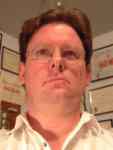 Joe Craig did undergraduate work in Chemistry
and Physics at Memorial University of Newfoundland.
After working with the Physics
Department at Memorial as a research assistant,
he did graduate work in Physical Chemistry and
received an M.Sc. degree in 2000. He is presently
a Physical Scientist with the Canadian
Government and is interested in the density structure
of the coastal ocean and radio methods of
elucidating surface dynamics.
Joe Craig did undergraduate work in Chemistry
and Physics at Memorial University of Newfoundland.
After working with the Physics
Department at Memorial as a research assistant,
he did graduate work in Physical Chemistry and
received an M.Sc. degree in 2000. He is presently
a Physical Scientist with the Canadian
Government and is interested in the density structure
of the coastal ocean and radio methods of
elucidating surface dynamics.
| ||||||||||||||||||||||
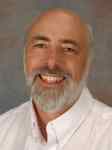 Len Zedel received the B.Sc. and M.Sc. degrees
in physics from the University of Victoria, Canada
in 1982 and 1985, and the Ph.D. degree in
physical oceanography from the University of
British Columbia, Canada in 1991. He is currently
an Associate Professor in the Department
of Physics and Physical Oceanography at Memorial
University of Newfoundland, St. John's,
Newfoundland, Canada. His research interests are
in ocean acoustics, fisheries acoustics, near surface
processes, ocean ambient sound, and suspended sediment
dynamics. Dr. Zedel is a member of the American Geophysical
Union.
Len Zedel received the B.Sc. and M.Sc. degrees
in physics from the University of Victoria, Canada
in 1982 and 1985, and the Ph.D. degree in
physical oceanography from the University of
British Columbia, Canada in 1991. He is currently
an Associate Professor in the Department
of Physics and Physical Oceanography at Memorial
University of Newfoundland, St. John's,
Newfoundland, Canada. His research interests are
in ocean acoustics, fisheries acoustics, near surface
processes, ocean ambient sound, and suspended sediment
dynamics. Dr. Zedel is a member of the American Geophysical
Union.
E-mail: zedel@physics.mun.ca | ||||||||||||||||||||||
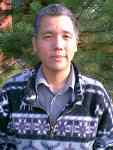 Siu O'Young obtained his B.Eng. at the University
of Saskatchewan and Master's and Ph.D.
degrees from the University of Waterloo all in
Electrical Engineering and is a Professional Engineer.
He has previously held faculty
appointments at Oxford University and at the
University of Toronto and is presently an Associate
Professor at the Faculty of Engineering at
Memorial University of Newfoundland. Dr.
O'Young is engaged in research on mechatronics
and autonomous avionics systems for unmanned
airplanes (UAV) for the iceberg surveillance and environmental
monitoring.
Siu O'Young obtained his B.Eng. at the University
of Saskatchewan and Master's and Ph.D.
degrees from the University of Waterloo all in
Electrical Engineering and is a Professional Engineer.
He has previously held faculty
appointments at Oxford University and at the
University of Toronto and is presently an Associate
Professor at the Faculty of Engineering at
Memorial University of Newfoundland. Dr.
O'Young is engaged in research on mechatronics
and autonomous avionics systems for unmanned
airplanes (UAV) for the iceberg surveillance and environmental
monitoring.
E-mail: oyoung@engr.mun.ca | ||||||||||||||||||||||
 | ||||||||||||||||||||||
| IEEE Canadian Review La revue canadienne de l'IEEE Fall / Autumne 2002 No. 42 | ||||||||||||||||||||||
|
Last update / 2002-12-30 / la dernière mise à jour | ||||||||||||||||||||||


